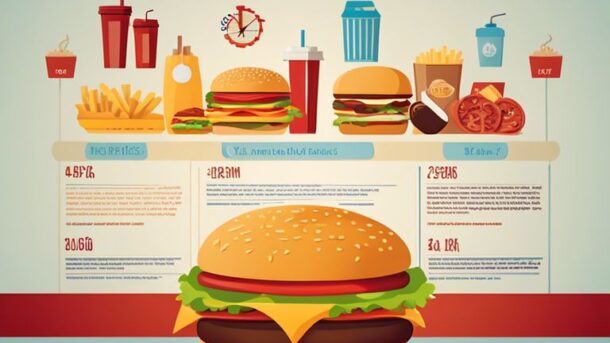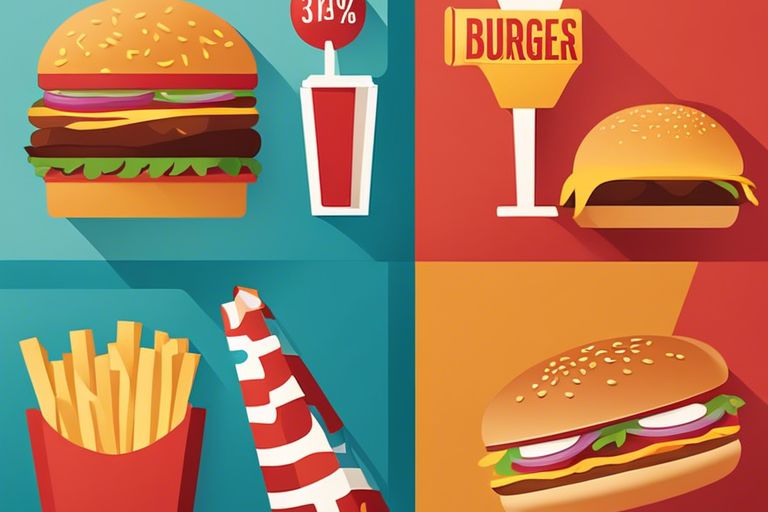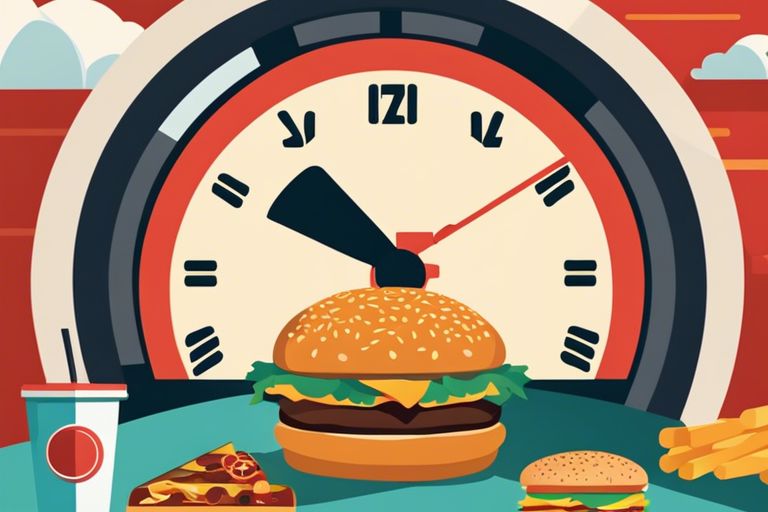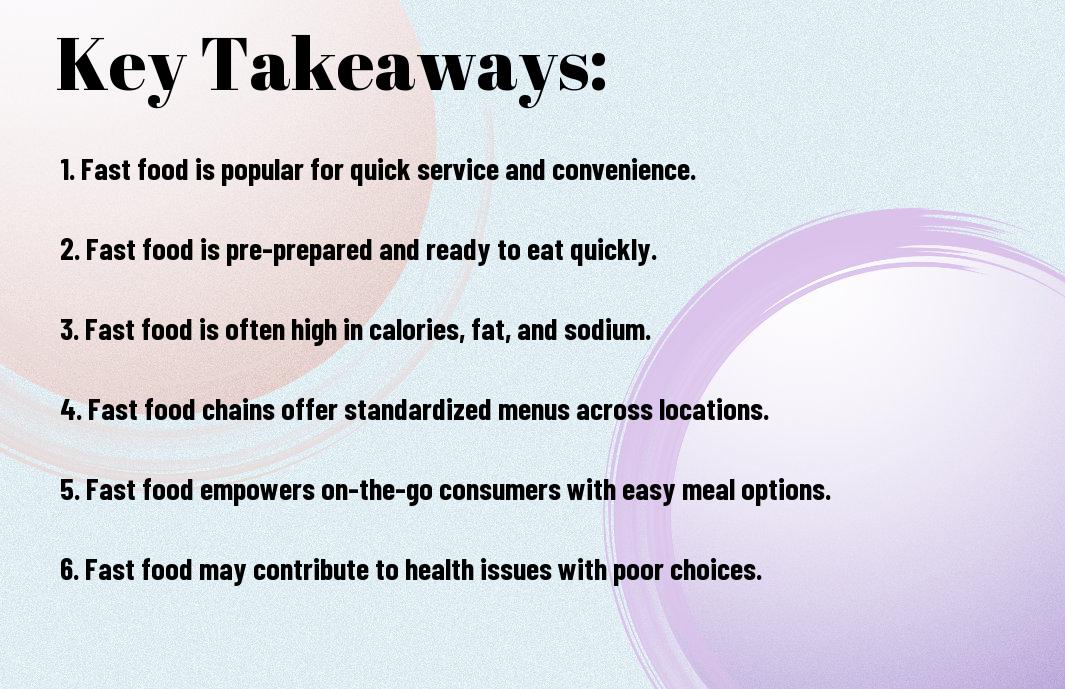With our fast-paced lifestyles and busy schedules, it’s no wonder why fast food holds a special place in your heart. From the convenience of grabbing a quick meal on the go to the irresistible taste of those perfectly seasoned fries, fast food taps into your desire for instant gratification and comfort. But have you ever wondered why you can’t resist the allure of a juicy burger or crispy chicken nuggets? Let’s examine into the fascinating reasons behind our love affair with fast food.
Key Takeaways:
- Convenience: Fast food is popular due to its quick and easy availability for consumers on the go.
- Taste: Many fast food items are designed to be rich in flavor, salt, and sugar, which can be addictive and appealing to our taste buds.
- Cost: Fast food is often perceived as a more affordable option compared to dining at restaurants, making it a popular choice for budget-conscious individuals.
The Convenience Factor
Saving Time in a Busy World
Time is a precious commodity in today’s fast-paced world. Your days are filled with work deadlines, appointments, and countless responsibilities, leaving little room to prepare elaborate meals. This is where fast food comes to the rescue, offering a quick and convenient meal option that saves you valuable time.
The Rise of On-the-Go Culture
The modern lifestyle is all about being on the move; whether you’re rushing to work, shuttling your kids between activities, or juggling multiple commitments, finding time to sit down for a leisurely meal can be a challenge. Fast food caters to this on-the-go culture, providing a solution for those moments when cooking simply isn’t an option.
It’s not just about the speed of service at fast-food restaurants; it’s also the accessibility. With drive-thru options and mobile ordering apps, you can easily grab a meal while running errands or during your daily commute. This level of convenience has made fast food a go-to choice for many individuals looking to satisfy their hunger in a pinch.
Emotional Connections
Childhood Memories and Nostalgia
The connections we have with fast food can often be traced back to our childhood memories and nostalgia. Remember the excitement of getting a Happy Meal from McDonald’s as a kid, or the joy of having a family pizza night with your favorite toppings? These experiences create emotional bonds with fast food that can last a lifetime.
Whether it’s the taste of your favorite burger or the smell of fresh fries, fast food has a way of triggering fond memories of simpler times. These nostalgic connections bring comfort and a sense of familiarity, making fast food a go-to choice for many, even as adults.
Comfort Food in Times of Stress
Connections to fast food can also be fuelled by its role as comfort food during stressful times. When you’re feeling down or overwhelmed, indulging in your favorite fast food meal can provide a sense of temporary relief and comfort. The familiar flavors and textures can help soothe your emotions and lift your spirits, even if just for a little while.
This emotional connection to fast food in times of stress is a common phenomenon, as many turn to familiar and comforting foods as a coping mechanism. The convenience and instant gratification that fast food offers make it a convenient choice when you’re seeking solace in times of need.
The Science of Cravings
Unlike other types of food, fast food is designed to trigger specific responses in your brain that make it almost irresistible. The combination of fat, sugar, and salt in fast food items is a perfect formula to activate your brain’s pleasure center and keep you coming back for more.
The Role of Dopamine and Reward Systems
With every bite of your favorite fast food meal, your brain releases dopamine, a neurotransmitter associated with pleasure and reward. This surge of dopamine creates a feeling of satisfaction and happiness, reinforcing your desire to eat more fast food. Over time, your brain starts to associate the consumption of fast food with pleasure, making it a hard habit to break.
The Psychology of Food Addiction
For many people, fast food can become addictive due to its powerful combination of flavors and the feelings of comfort and nostalgia it can evoke. This emotional connection to fast food can lead to addictive behaviors where you turn to these foods in times of stress or emotional distress, seeking solace in the familiar taste and experience.
A study published in the American Journal of Clinical Nutrition found that consuming highly palatable foods, like fast food, can lead to changes in the brain similar to those seen in individuals addicted to drugs and alcohol. This sheds light on how the psychology of food addiction can be as strong and impactful as other forms of substance dependence.
Marketing Magic
Despite Why do people mostly love to eat fast food? being a common question, the answer often lies in the marketing strategies employed by fast-food companies. The allure of fast food goes beyond just the taste; it’s also about the power of branding and advertising that these companies have mastered.
The Power of Branding and Advertising
One of the main reasons why fast food is so appealing to you is the strong brand presence that these companies have built over the years. From catchy slogans to iconic logos, these brands have successfully embedded themselves into your daily life. The constant bombardment of advertisements on television, social media, and billboards further solidifies their place in your mind, making it hard to resist the appeal of grabbing a quick burger or fries.
Targeting Our Weaknesses with Clever Campaigns
To keep you coming back for more, fast-food chains target your weaknesses with clever marketing campaigns. Whether it’s promoting limited-time offers, creating value meal deals, or introducing innovative menu items, these companies know how to tap into your cravings and tempt you with irresistible options. With the rise of digital marketing, personalized ads based on your preferences make it even harder to resist the temptation of ordering your favorite fast-food meal.
With strategic placement of ads near busy locations and partnerships with popular influencers, fast-food chains create a sense of urgency and desire that can be hard to ignore. By understanding consumer behavior and catering to your cravings, these companies have mastered the art of marketing magic to keep you coming back for more.

Social Influences
All your decisions, including your food choices, are greatly influenced by the people around you. Peer pressure and social norms play a significant role in why we love fast food. You may find yourself succumbing to the temptation of grabbing fast food because your friends are doing the same. In social settings, it’s common to see others indulging in burgers, fries, and sodas, making it seem like the norm. This can influence your choices, even if deep down you know it’s not the healthiest option.
Peer Pressure and Social Norms
For many, the desire to fit in and be accepted by your peers can lead you to choose fast food options even when you may not truly want them. The fear of standing out or being judged can make you prioritize social acceptance over making healthier choices. Additionally, social norms can shape your perception of what is considered normal or acceptable behavior, making it easier to justify frequenting fast food restaurants with friends.
The Impact of Social Media on Food Choices
One of the most significant modern-day influencers on your food choices is social media. Platforms like Instagram, Facebook, and TikTok are filled with enticing images and videos of delicious fast food, often glamorizing these unhealthy options. The constant exposure to such content can desensitize you to the negative effects of consuming fast food regularly and create cravings for these convenient meals.
It’s imperative to be mindful of the impact social media can have on your food choices and to make conscious decisions that align with your health goals. Remember that what you see online may not always reflect reality, and it’s crucial to prioritize your well-being over fleeting cravings influenced by these platforms.
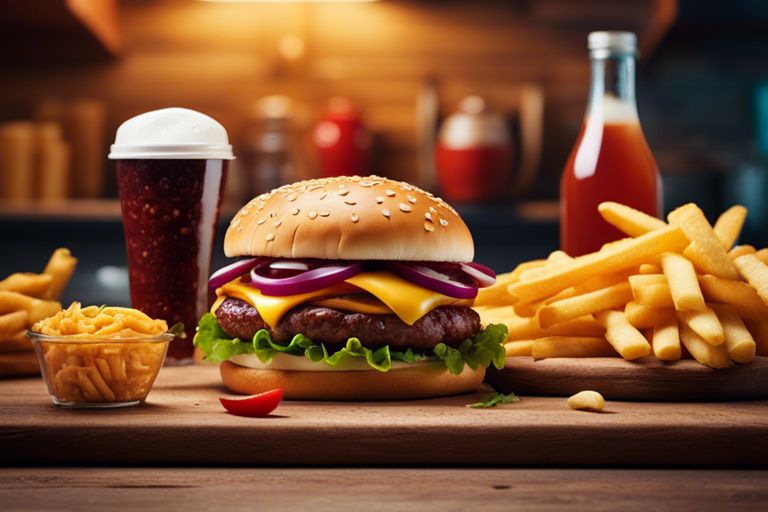
Nutritional Necessities
For a lot of people, fast food is a go-to option due to its convenience and affordability. According to a study published in Why eat at fast-food restaurants: reported reasons among …, many individuals cited convenience as one of the primary reasons they choose to eat at fast-food restaurants. In our fast-paced lives, grabbing a quick meal on the go can be a solution to time constraints.
The Convenience-Health Tradeoff
For many, the allure of fast food lies in the tradeoff between convenience and health. While fast food is generally known for being high in calories, fat, and sodium, it offers quick and easy meal options when you’re pressed for time. This tradeoff can sometimes lead you to prioritize convenience over nutritional content, especially when you’re on the go or in a rush.
The Quest for Guilt-Free Fast Food Options
Any health-conscious individual knows the struggle of finding guilt-free options at fast food establishments. You might find yourself scanning the menu for healthier choices, such as salads or grilled chicken sandwiches, in an attempt to make a more nutritious decision. However, the availability of these options can vary widely from one fast food chain to another.
With the growing demand for healthier food options, some fast food restaurants have started to offer more nutritious choices on their menus. This shift reflects a changing consumer preference towards healthier eating habits, prompting fast food chains to adapt and cater to those looking for guilt-free options.
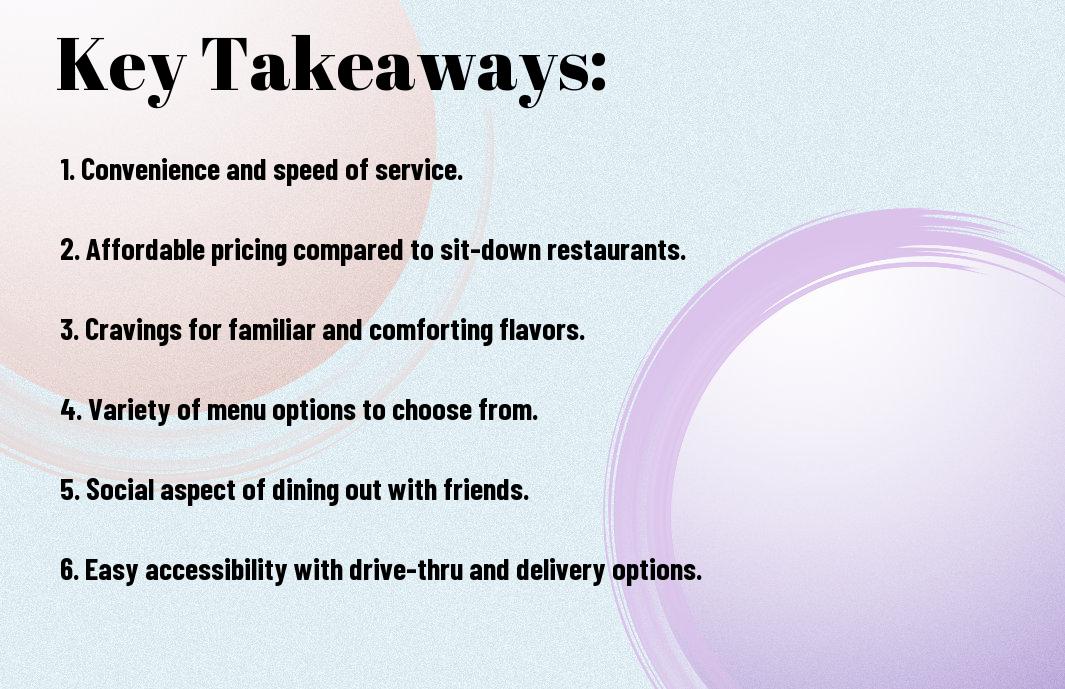
Conclusion
From above, you can understand that there are several reasons why people love fast food. The convenience, affordability, and addictive taste all contribute to its popularity. However, it is crucial to remember to consume fast food in moderation and balance it with healthier food choices for a well-rounded diet.
Next time you find yourself craving fast food, consider the factors discussed in this article. Acknowledge your cravings but also be mindful of making healthier choices when possible. By being aware of why you love fast food and making conscious decisions about your diet, you can enjoy your favorite treats without compromising your health and well-being.
FAQ
Q: Why do people love fast food?
A: People love fast food because it is convenient, affordable, and satisfying. Fast food restaurants are easily accessible, with drive-thru options and quick service making it a popular choice for those on the go. Additionally, many fast food items are priced lower than traditional restaurant meals, making them appealing to those looking for a budget-friendly option. The taste and flavor profiles of fast food, such as burgers, fries, and pizza, are often designed to be indulgent and crave-worthy, which can be a major draw for many consumers.
Q: Is fast food bad for you?
A: While fast food can be enjoyed in moderation, consuming it in excess can have negative effects on your health. Many fast food items are high in calories, unhealthy fats, sodium, and sugars, which can contribute to weight gain, high cholesterol, high blood pressure, and other health issues when consumed regularly. Additionally, fast food often lacks crucial nutrients such as vitamins, minerals, and fiber that are important for overall health. It’s important to balance fast food consumption with healthier options and to be mindful of portion sizes to maintain a well-rounded diet.
Q: How can I make healthier choices when eating fast food?
A: To make healthier choices when eating fast food, opt for items that are grilled or roasted instead of fried, such as grilled chicken sandwiches or salads with grilled protein. Choose water or unsweetened beverages instead of sugary sodas or milkshakes to reduce your intake of added sugars. Look for menu items that include vegetables or fruits, and consider swapping out sides like fries for a side salad or fruit cup. Pay attention to portion sizes and avoid super-sized or extra-large options, as well as adding extra toppings or sauces that can increase calories and unhealthy fats. By making these small changes, you can enjoy fast food while still prioritizing your health and well-being.




